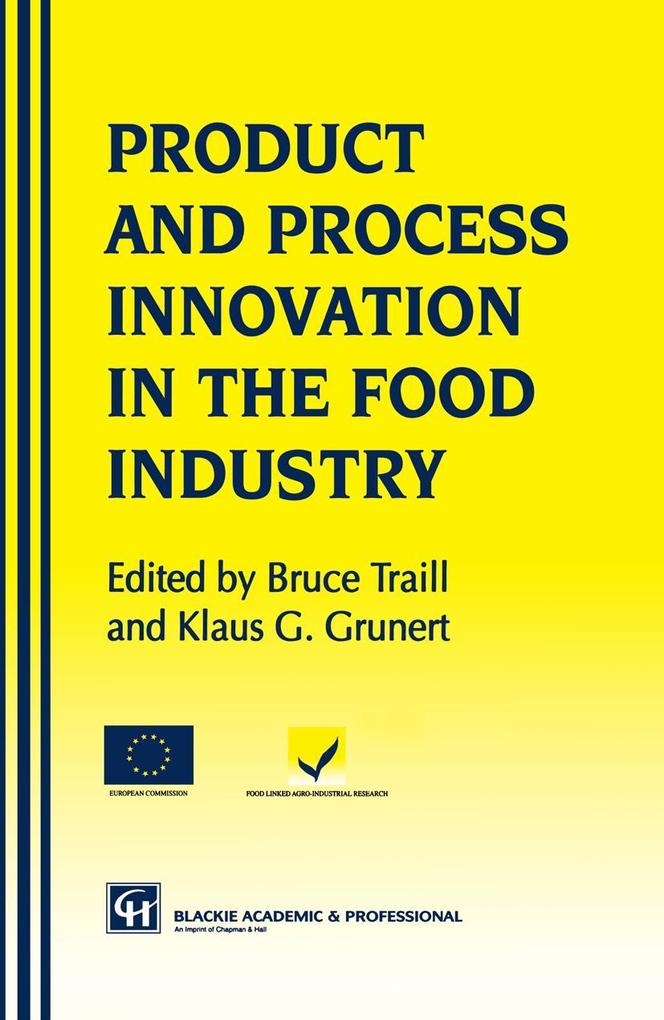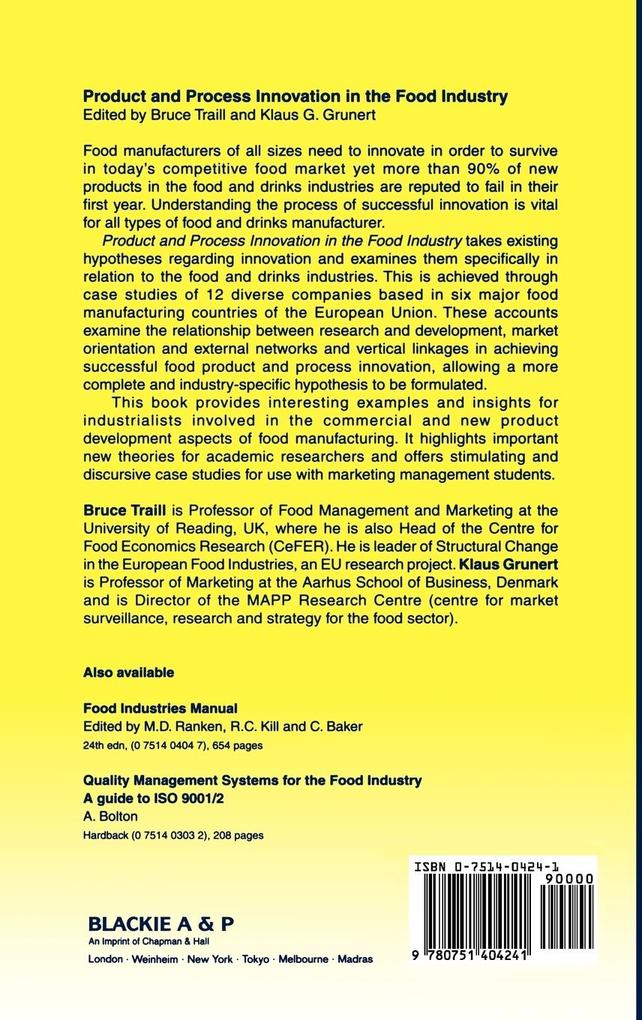Bücher versandkostenfrei*100 Tage RückgaberechtAbholung in der Wunschfiliale

Zustellung: Mo, 04.08. - Do, 07.08.
Versand in 7 Tagen
VersandkostenfreiBestellen & in Filiale abholen:
Innovation in new product development is a key factor in determining the success of a food company yet the area is fraught with risk, with failure rates in excess of 90% being common. Using a series of 12 European cases studies, this book examines the innovation process from agriculture through to retailer. Each example highlights a different aspect of innovation, and the lessons that can be learned from experience. It considers the important role that marketing as well as technical aspects play in the process.
Inhaltsverzeichnis
1 A framework for analysing innovation in the food sector. - 2 Structural changes in the European food industry: consequences for innovation. - 3 Tholstrup Cheese A/S: in love with cheese. - 4 Brioche Pasquier SA: industrializing traditional French baking. - 5 Groko BV: success by imitation. - 6 Neumarkter Lammsbräu: brewing beer for Greens. - 7 Skåne Erik: cold cuts for hot Swedes. - 8 H P Bulmer Holdings Plc: the revival of cider. - 9 Philipp Reiter KGH Fleischwaren: ready meals for steady Germans. - 10 Royal Greenland A/S: from fish to food. - 11 Skånemejerier: functional foods through research. - 12 Johma Nederland BV: being cool with chilled salads. - 13 Magdis: home-made by the million. - 14 Pennine Foods: always prepared for a new ready meal. - 15 Innovation in the food sector: a revised framework. - Appendix: Guidelines for the case studies. - A. 1 General procedure. - A. 2 Whom to talk to. - A. 3 What information to get. - A. 4 Description of the company. - A. 4. 1 General characteristics. - A. 4. 2 Company organization. - A. 5 Type of markets served by the company. - A. 6 Market strategy of company. - A. 7 Relationship with suppliers. - A. 8 Relationship with other partners. - A. 9 Importance and type of innovation. - A. 10 Organization of innovations. - A. 11 Innovation policies. - A. 12 Process innovation. - A. 13 Financial aspects of R&D. - A. 14 Market orientation.
Produktdetails
Erscheinungsdatum
31. Mai 1997
Sprache
englisch
Untertitel
Auflage 1997.
XX, 242 p.
Sprache: Englisch.
Auflage
1997
Seitenanzahl
268
Autor/Autorin
Klaus Günter Grunert, W. Bruce Traill, Klaus G. Grunert, Bruce Traill
Illustrationen
XX, 242 p.
Verlag/Hersteller
Produktart
gebunden
Abbildungen
XX, 242 p.
Gewicht
571 g
Größe (L/B/H)
241/160/20 mm
ISBN
9780751404241
Entdecken Sie mehr
Bewertungen
0 Bewertungen
Es wurden noch keine Bewertungen abgegeben. Schreiben Sie die erste Bewertung zu "Products and Process Innovation in the Food Industry" und helfen Sie damit anderen bei der Kaufentscheidung.












